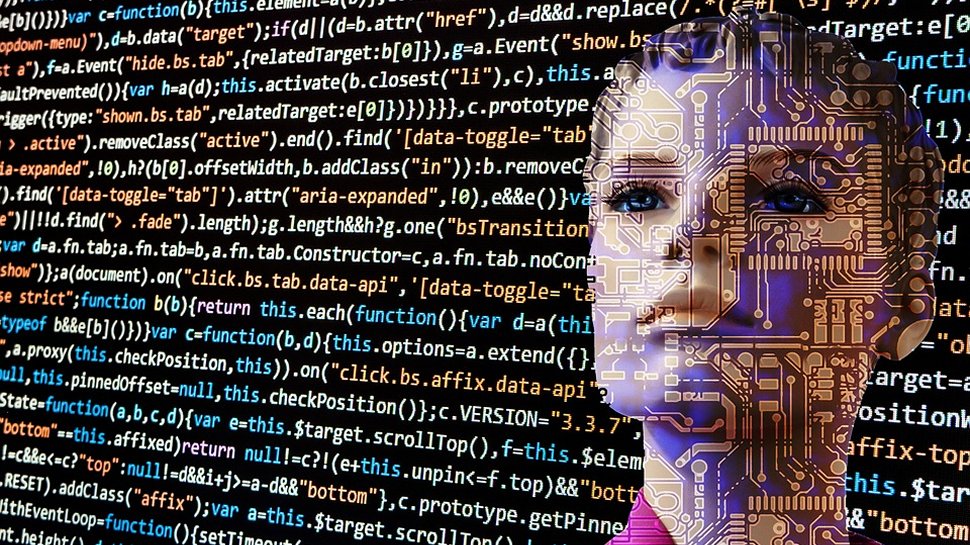The age of AI: reimagining employee experience
Employees should be as much as a focus as the customer

Christopher Savio is Senior Product Marketing Manager at LogMeIn.
Artificial intelligence (AI) has become ingrained in our day-to-day lives without us even noticing. From basic voice assistants that can play music by just saying one word, to self-driving cars, there is no turning back from the world of AI. Today’s tech-savvy consumers have grown to love AI so much due to its ability to improve overall customer experiences and resolve issues in a timely way. As a result, businesses are jumping on board the AI journey at an unprecedented pace. There is little doubt in AI’s ability to dramatically transform the customer experience, so why isn’t the same attention being given to the employee experience?
Today’s Workforce
Today’s workforce has changed dramatically compared to the workforce of previous generations. More employees are working remotely than in traditional offices, and recent research shows that by the year 2020 more than 50 percent of employees will enjoy the benefits of working someplace other than a traditional office. In addition to where we work, how we work is also changing.
While millennials have had access to cell phones and the internet for virtually their entire lives, even generations that have not grown up with this technology are embracing well-designed, easy-to-use applications. Employees across industries expect technology to make jobs easier and more productive, however, the bar for what companies believe is user-friendly technology is often far too low.
Even companies that are forward-thinking and want to move beyond antiquated systems, are struggling to implement technology that is as easy to use as Alexa whether on an Echo or other device, but also seamlessly fits into the current processes and workflow – and it’s having an impact on retention and employee satisfaction. Research suggests that a majority of employees that are looking for new jobs are doing so because of broken company processes, including being able to connect with support departments like IT and HR.
A direct correlation
One wrong customer experience can create a lasting impression. Therefore, businesses are now so focused on providing exceptional customer experiences that employee experiences becomes an afterthought. Businesses know that if they want to compete with the Amazons of the world, they need to go above and beyond to ensure a superior customer experience. They have done this by pulling out all the stops and implementing new technologies that allow consumers to do things like virtually design homes with furniture they’re considering buying or try on clothing in a virtual dressing room.
These innovations have changed the game when it comes to customer experience. But behind the curtain, employees are under constant pressure to provide this experience and are not equipped with the same flashy technologies to help them do their jobs. In fact, the technologies designed to support the modern workforce often times do the opposite – they hinder employees’ productivity, efficiency and, as some would claim, even the ability to produce meaningful work.
In a business-driven world where time is money, no one should struggle to figure out technologies that are supposed to “support” them and make their lives easier. The reality is that many existing support solutions today are outdated and actually work against the employee, inhibiting the ability to help them and the business thrive.
Are you a pro? Subscribe to our newsletter
Sign up to the TechRadar Pro newsletter to get all the top news, opinion, features and guidance your business needs to succeed!
The workplace of the future
In what ways can businesses improve employee experience whilst also giving their employees the freedom to do the best work? We already know that workplaces of the future are likely to be increasingly more remote, as more companies choose to run their businesses from co-working spaces or have no office space at all. With the workplace becoming more fluid and dynamic, and employees working out of home offices or coffee shops, in varying locations, businesses need to be prepared to support employees across state lines and time zones. We also know that future of the workplace will be increasingly more digital, as the technical innovations that alter the way we live outside the office will become expected in the professional environment as well.
Businesses need to reimagine the workplace the way they’ve reimagined the customer journey. Emerging technologies like AI-powered chatbots, for example, are helping with everything from onboarding and training, to providing assistance during meetings, to helping solve common employee questions that often plague IT, HR, facilities and other support teams at organisations. AI is helping businesses save time and energy – while still ensuring employees have help every step of the way.
Inundations of Help Tickets
A great example of AI in the workplace is in IT, which isn’t surprising with IT being the backbone of technology exploration and vetting at organisations. These teams spend a good majority of their days working through cluttered support queues full of repetitive tickets - whether its password resets, email access or printer setups. These are questions that can often be found in knowledge management systems or intranets, but when employees have questions – especially if those issues are hindering them from getting work done -- they would much rather ask their IT buddy than go searching through a sea of URLs and documents to find the answer.
This endless onslaught of requests cuts down on the amount of time the IT team can devote to higher-value problem solving or long-term strategic initiatives. Not to mention, it must be incredibly frustrating when ten people in one day ask you how to access a remote server – copy and paste at its finest. IT teams, which are already stretched thin, are drowning in these requests day in and day out, and it becomes a problem for the entire business operation.
And IT isn’t the only one affected by this cyclical support queue. While the help desk team is busy working its way through tickets or dealing with an unexpected “fire drills,” employees who are waiting for support grow frustrated with resolution time. Sometimes they even turn to unauthorised solutions that bring their own security implications.
Employing an AI-powered support partner to help answer these questions removes the pain of searching through outdated and hard to read knowledge articles, empowers employees to self-serve and opens up the IT team to work with the employees who need them the most. Thanks to Google, today’s workforce is programmed to take a DIY-approach to problem solving and often prefers self-service, so organisations need to embrace and capitalise on this - and AI is one of the ways to help bring it to the workplace.
Time is money
The famous saying, time is money must be remembered. However, if businesses don’t focus on the employee experience, they will be diminishing their success in the long run, creating lasting inefficiencies for the bottom line. Now is the time to start removing friction from the day-to-day by using tools that will enable employees to do their best work. Ultimately, these efforts will allow businesses to thrive as employees will feel motivated to become more productive and simultaneously more satisfied.
Christopher Savio is Senior Product Marketing Manager at LogMeIn.
Christopher Savio is Senior Product Marketing Manager at LogMeIn.
As a Manager of Product Marketing for the Customer Engagement and Support Solutions business, he helps shape the product strategy for our Bold360 and Rescue products, and owns the development and implementation of the go-to-market plans for these offerings. He is passionate about using customer centric research and insights to help push forward strategic decisions and product innovations.
